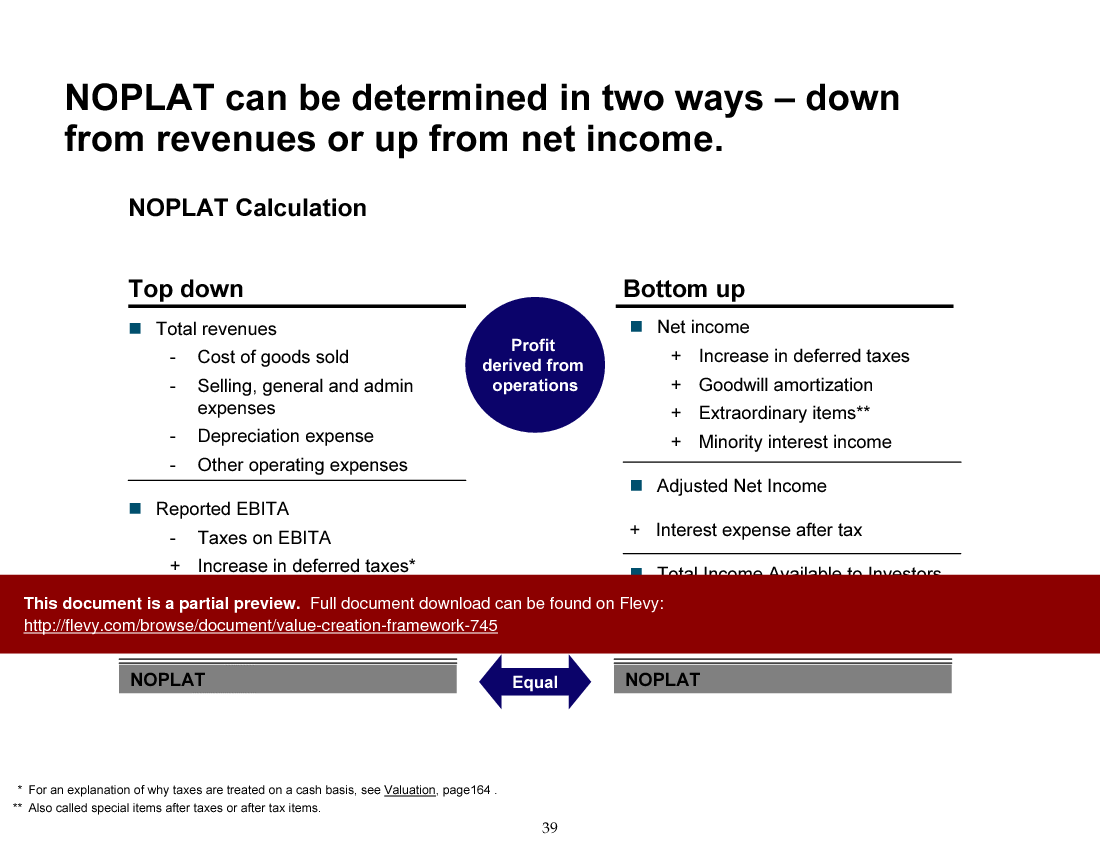Value Creation Framework (PowerPoint PPT Slide Deck)
PowerPoint (PPT) 54 Slides
VALUE CREATION PPT DESCRIPTION
This document introduces a Value Creation Framework that helps company managers better understand the relationship between a stock's intrinsic value and its financial and value drivers.
Managers can apply this framework to identifying value drivers to enhance the total return to shareholders. The presentation slides also contain notes for conducting a training using the material.
The Value Creation Framework document delves into key metrics like Market Value Added (MVA) and Total Return to Shareholder (TRS), which are crucial for assessing capital market performance. These metrics are broken down with clear definitions and calculations, making it easier for managers to grasp their significance. The document also highlights how market-to-capital ratios can offer a different perspective by expressing value as a ratio rather than a dollar amount.
The framework emphasizes the importance of understanding historical performance to make accurate future forecasts. Steps like calculating invested capital, NOPLAT, and breaking down ROIC are meticulously outlined. This methodical approach ensures that managers can thoroughly analyze and interpret past performance to make informed decisions.
A significant portion of the document is dedicated to the Weighted Average Cost of Capital (WACC). It explains how to estimate the cost of capital and its sensitivity to various levers. The document also discusses triangulating DCF results using other valuation methods like market multiples and transaction multiples, providing a comprehensive view of a company's value.
The document concludes by illustrating how value creation is driven by spread and growth, using industry-specific examples like the global airline industry. It underscores the importance of understanding Return on Invested Capital (ROIC) and disaggregating it to identify areas for improvement. This detailed, step-by-step guide is an invaluable resource for managers aiming to enhance shareholder value.
Got a question about the product? Email us at support@flevy.com or ask the author directly by using the "Ask the Author a Question" form. If you cannot view the preview above this document description, go here to view the large preview instead.
Source: Best Practices in Value Creation PowerPoint Slides: Value Creation Framework PowerPoint (PPT) Presentation Slide Deck, Documents & Files
VALUE CREATION PPT SLIDES
This document is available as part of the following discounted bundle(s):
Save %!
Essential Consulting Knowledge Builder
This bundle contains 21 total documents. See all the documents to the right.















